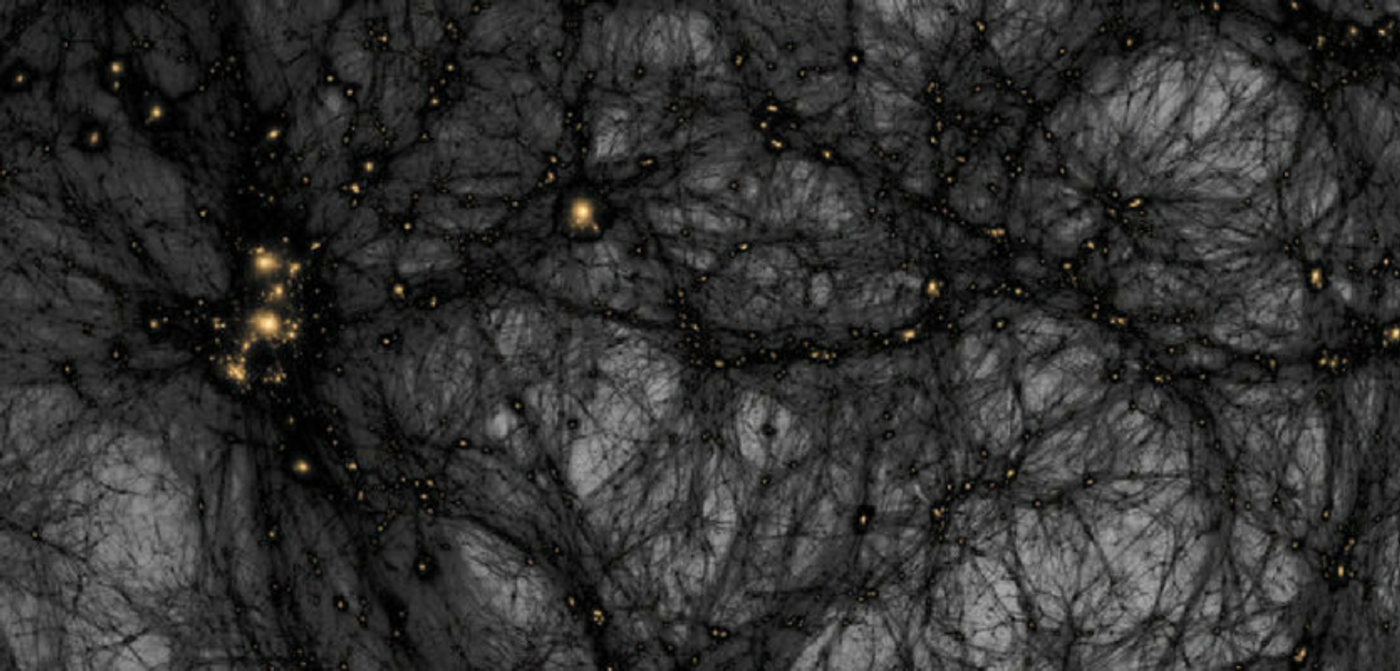New Theory Sends Dark Matter and Dark Energy Into An Existential Crisis
André Maeder, an honorary professor and physicist at the University of Geneva (UNIGE), has come up with a radical theory that would change how scientists see the universe, and the main pillars of astrophysics. According to the findings based on his new model of universe, there is neither dark matter nor dark energy. The Swiss physicist has shown how the universe can work without them, according to a series of articles published by his group in The Astrophysical Journal.
So what are dark matter and dark energy? These two names appear in more and more science news headline. But people are often confused about what is the meaning of these two highly technical yet not well defined terms.
Physicists have known for decades that the universe has been expanding since the moment of Big Bang, but they were not sure if the process would reverse or not. To everyone's surprise, in 1998 the Hubble Space Telescope revealed that the universal expansion is speeding up.
To explain this phenomenon, scientists hypothesized that the expansion is driven by a force known as “dark energy”. Rather than allowing the universe to expand at a constant rate, dark energy pushes it along, causing it to pick up speed. According to calculation, dark energy is thought to comprise roughly 68% of the total energy-matter (remember the famous equation which bridges mass and energy?) known universe. All we have known about dark energy is only based its relation to gravity. In other words, scientists can only detect them indirectly
How about dark matter? It may be one of the most unsettling concepts that modern physics has brought us. It is “dark” means it doesn’t emit any electromagnetic radiation. No visible light, microwave, x-ray, or gamma ray, nothing, period. It is called “matter” doesn’t just mean it’s made of basic particles that we know. But its gravity causes the same gravitational attraction on ordinary, visible, matter.
Although Vera Rubin was credited for her role in studying the galaxy rotation problem, and providing supportive evidence of dark matter, she wasn’t the first to come up with the idea. A few decades before that, Swiss astronomer Fritz Zwicky noticed that about a thousand galaxies are bound together by gravity to the “Coma Cluster”, though they rotate a little too fast. He thought that there must be some unseen matter that holds them together and described it as "dunkle Materie".
Dark matter is responsible for holding the current structures of the universe against the accelerating expansion. Since dark matter doesn’t interact much with itself and other stuff, it is thought to be the first type of matter to settle down when the universe expands and the first to form structures under its own gravitational pull.
Maeder proposed that instead of dark matter or dark energy, we’ve simply forgotten to include scale invariance into the Standard Model—our current model of the universe. This has so far been developed mainly from Newton’s universal gravitation, Einstein’s general relativity, and quantum mechanics.
"In this model, there is a starting hypothesis that hasn't been taken into account, in my opinion," Maeder said. "By that, I mean the scale invariance of empty space; in other words, empty space and its properties do not change following a dilatation or contraction." If this is true, it will change everything we know about gravity and universal expansion.
Maeder was not the first one that delivered a major shakeup to the concepts of dark matter and dark energy. In early 2010, string theorist Erik Verlinde at the University of Amsterdam published his alternative theory of gravity, which describes a universe without dark matter. What’s more fascinating is that in 2016 a team of Dutch astronomers led by Margo Brouwer at Leiden Observatory verified his controversial theory of gravity—it was able to account for the gravity distribution of 33,000 galaxies accurately.
Just like Verlinde’s theory, Maeder’s findings are controversial. Many physicists think his new model of the universe either inconsistent or at least massively overhyped. Plus, it cannot dispute other evidence that supports the existence of dark matter, such as its influence in cosmic microwave background and the phenomenon called gravitation lensing, which serves as a well-known hint at dark matter.
Verlinde's new theory first tested with weak gravitational lensing. Credit: NOVAastronomieNL
Source: bigthink/motherboard









